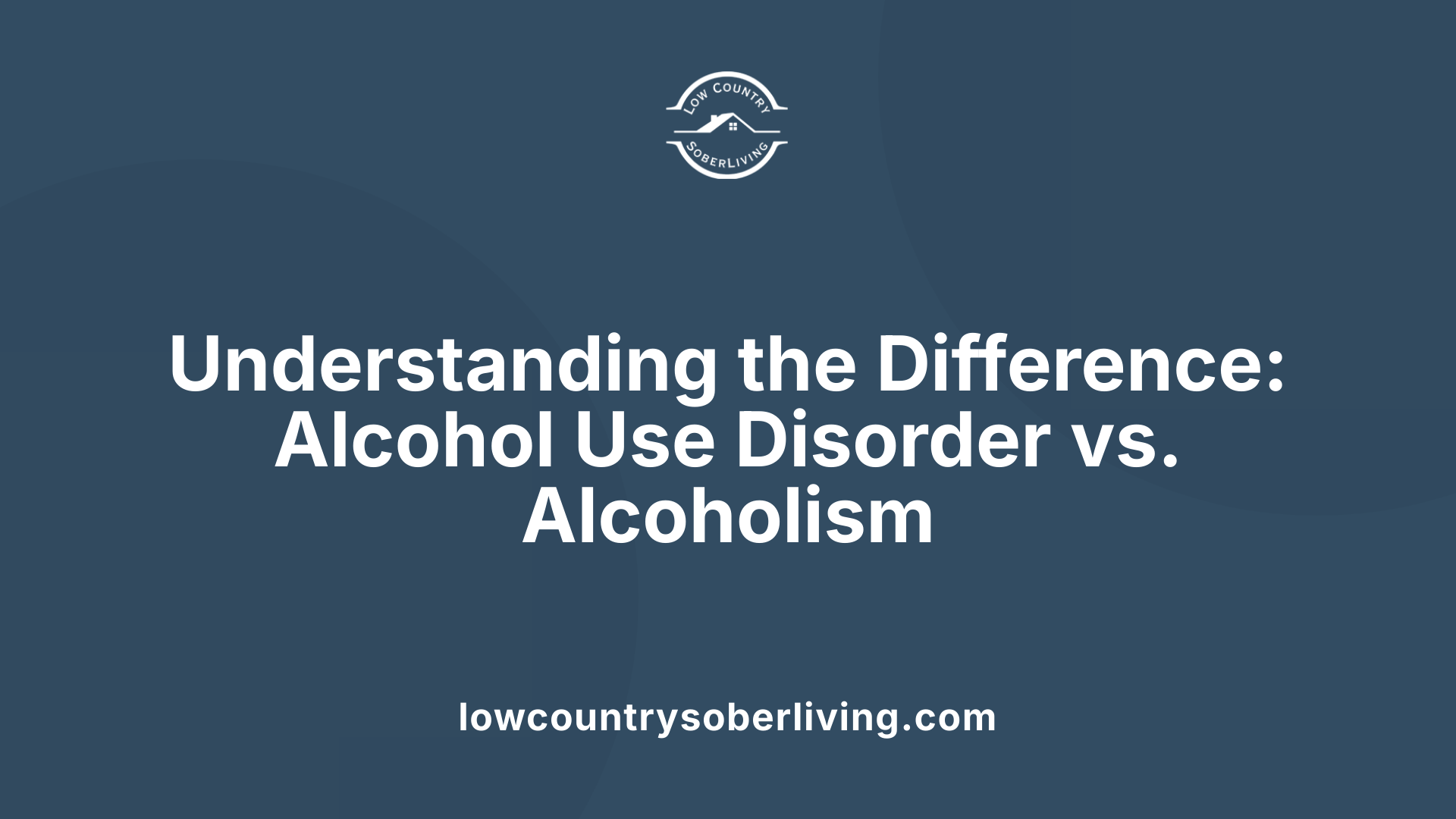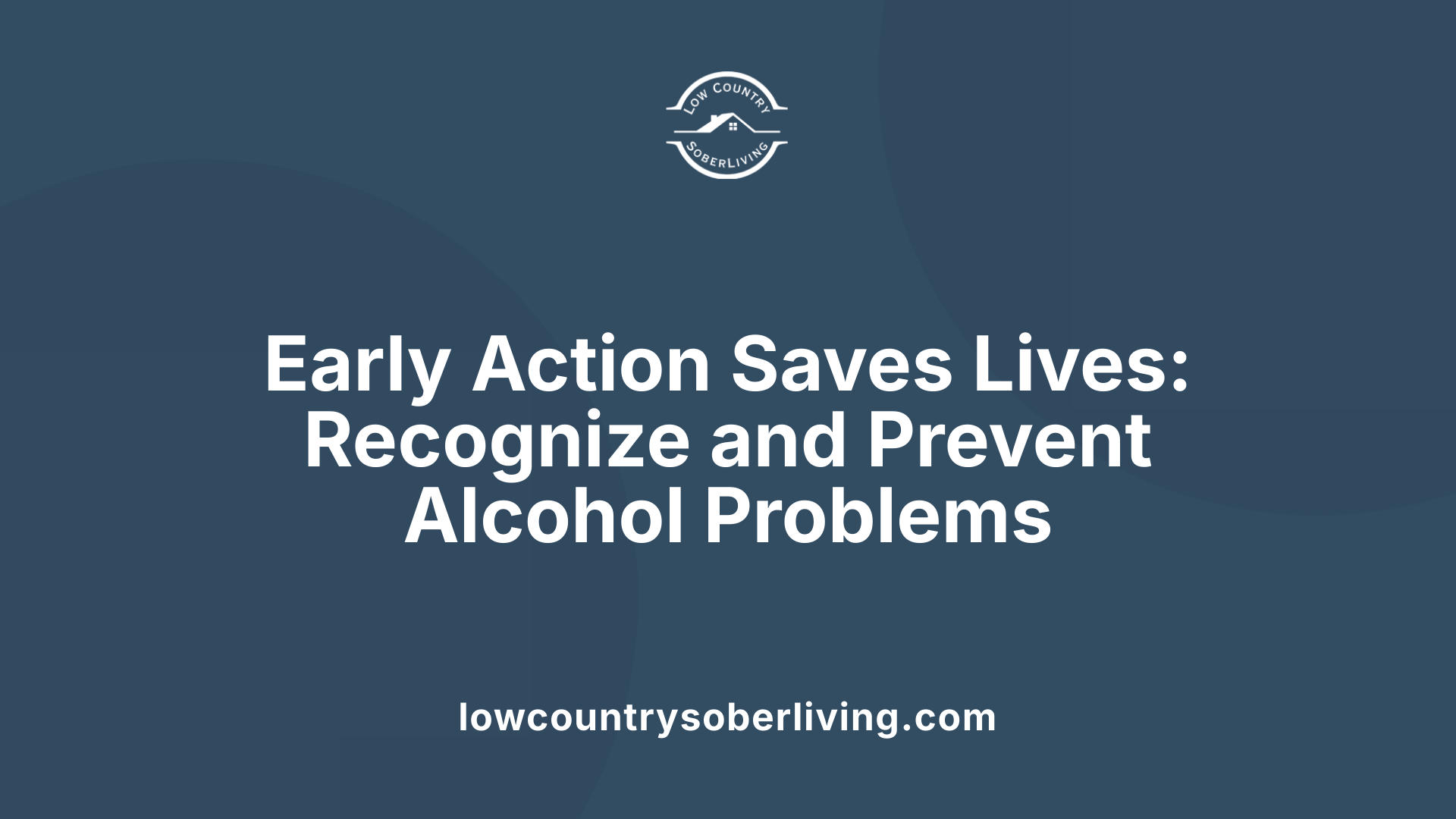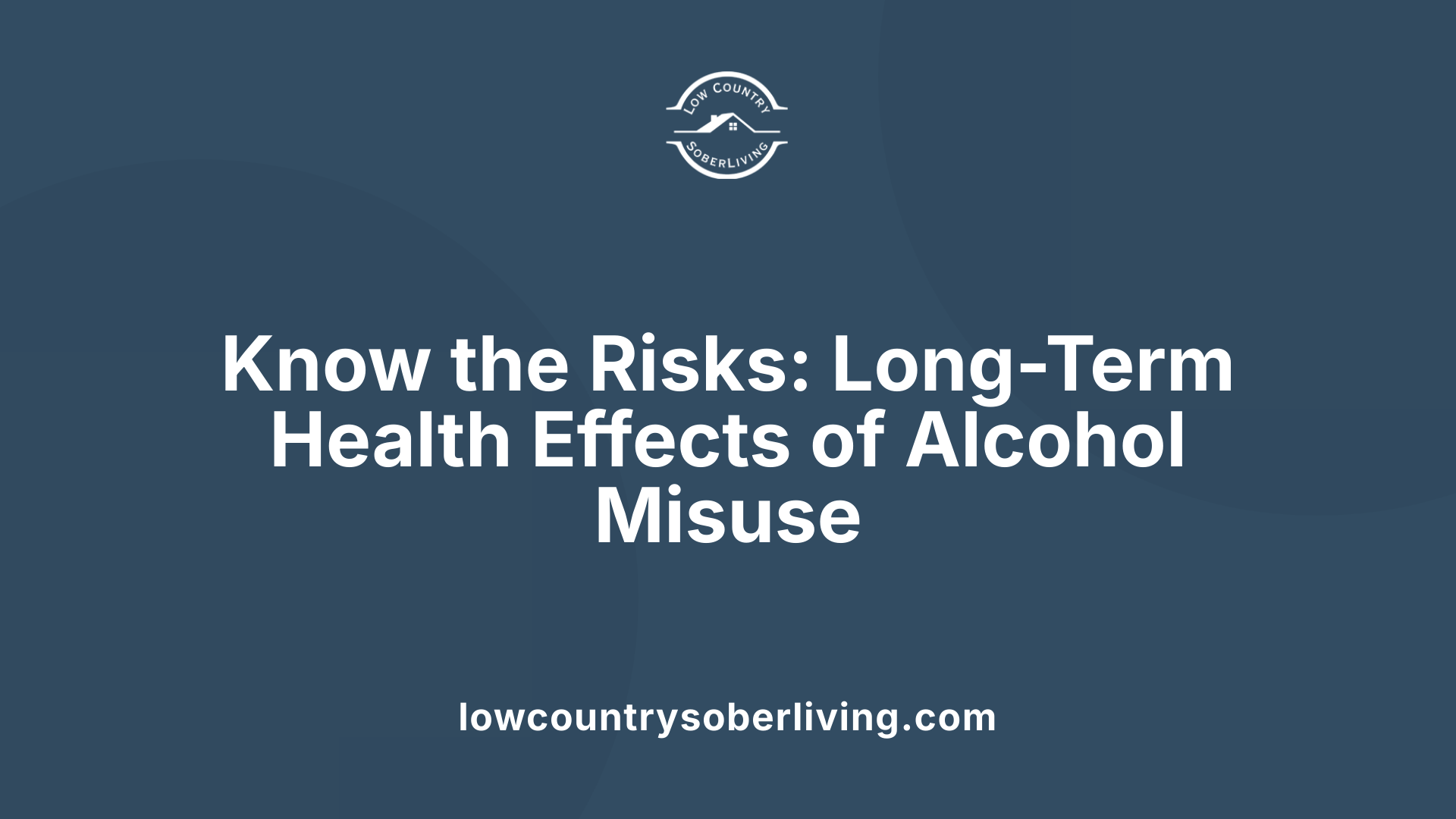Deciphering the Terms and Signs of Problematic Drinking
Alcohol consumption varies widely across individuals, from casual drinking to severe dependence. While moderate drinking can be harmless, it is crucial to recognize when alcohol use becomes problematic or escalates into disorder. This article explores the nuanced differences between alcohol use and its problematic forms, highlighting signs, symptoms, and the importance of early intervention.
Defining Alcohol Use and Its Excesses
What are the recommended guidelines for alcohol consumption?
Health authorities suggest moderation when it comes to alcohol intake. For most adults, limiting alcohol consumption to no more than two drinks per day for men and one drink per day for women is considered low risk. A single drink typically contains about 8 grams of pure alcohol, roughly half a pint of beer or a small shot of spirits. Staying within these limits can reduce the risk of developing health problems associated with alcohol.
Beyond daily limits, weekly consumption also matters. The advised maximum is up to 14 units for both men and women. Exceeding these guidelines regularly can lead to an increased risk of health issues such as liver disease, certain cancers, cardiovascular problems, and mental health disorders.
What are the signs of problematic alcohol consumption?
Early warning signs include drinking to cope with emotions, lying about alcohol intake, feeling guilty after drinking, forgetting events when drunk, and an increased tolerance requiring more alcohol to achieve the same effect. If these patterns occur frequently, they may indicate problematic alcohol use.
More severe signs of alcohol dependence or alcoholism include inability to stop drinking despite negative consequences, withdrawal symptoms like nausea, sweating, or tremors when not drinking, and a persistent desire to consume alcohol. Drinking alone, binge drinking, and hiding alcohol consumption are behavioral signs that often accompany alcohol dependence.
How does alcohol intake relate to health risks?
Excessive alcohol consumption can cause short-term issues like hangovers, accidents, and injuries due to impaired judgment. Long-term, heavy drinking can lead to serious health conditions such as liver cirrhosis, heart disease, certain cancers, and neurological damage. Alcohol abuse also impacts mental health, increasing the risk of depression, anxiety, and other mood disorders.
Importantly, drinking more than the recommended amounts or engaging in binge drinking significantly raises these health risks. Recognizing the signs of problem drinking and adhering to low-risk guidelines helps in preventing these adverse outcomes.
| Alcohol Intake Level | Standard Definition | Potential Risks | Examples |
|---|---|---|---|
| Moderate Drinking | Up to 2 drinks/day (men), 1 drink/day (women) | Reduced health risks | Daily social drinking within limits |
| Heavy Drinking | More than 14 units/week | Increased health risks | Exceeding weekly limits consistently |
| Binge Drinking | 5+ drinks in 2 hours (men), 4+ drinks (women) | Alcohol poisoning, accidents | Partying with multiple drinks in short time |
| Alcoholism/Dependence | Meeting clinical criteria, withdrawal signs | Severe health and social issues | Unsuccessful attempts to abstain, loss of control |
Understanding and monitoring one's drinking patterns against these benchmarks is important for maintaining health and avoiding dependence.
Distinguishing Alcohol Use Disorder and Alcoholism

What is the difference between alcohol use disorder and alcoholism?
Alcohol use disorder (AUD) is a clinical diagnosis outlined in the DSM-5, which is the standard manual for mental health conditions. It categorizes the severity of problematic drinking as mild, moderate, or severe based on specific criteria such as cravings, loss of control over drinking, withdrawal symptoms, and continued use despite harmful consequences.
In contrast, alcoholism is an older, non-medical term that is often used colloquially or in recovery circles to describe severe alcohol dependence. It is not a formal diagnosis in medical or psychological terms. The term "alcoholic" is generally considered informal and is not used by healthcare providers in diagnostic settings.
While both phrases relate to problematic alcohol consumption, their differences are significant. AUD provides a structured, evidence-based framework for diagnosis and treatment. It helps clinicians assess the level of severity and customize treatment plans accordingly.
The misuse of the term "alcoholism" can sometimes lead to misunderstandings about the nature of alcohol problems, as it might imply a more permanent or less treatable condition. However, most people with AUD, including those once called alcoholics, can benefit from treatment, support groups, and behavioral therapy.
Current diagnostic standards
The DSM-5's criteria for AUD include symptoms like drinking more than intended, unsuccessful efforts to cut down, withdrawal symptoms, and neglecting responsibilities. The severity level depends on the number of criteria met, with six or more indicating severe AUD.
This modern diagnostic approach emphasizes that alcohol problems exist on a spectrum. It encourages early intervention, aiming to address even mild cases before they escalate.
Overall, understanding the distinction helps reduce stigma, promotes accurate diagnosis, and fosters better treatment outcomes. Recognizing that AUD is a medical condition open to treatment underscores the importance of seeking help rather than feeling shame or denial, common with the outdated term "alcoholism."
Understanding Alcohol Dependence and its Manifestations
What behavioral signs indicate dependence?
Individuals with alcohol dependence often exhibit specific behavioral patterns that distinguish them from casual drinkers. They may drink alone, binge drink frequently, or use alcohol as a way to cope with negative emotions like stress, anxiety, or depression. Hidden drinking and binge sessions are common—often drinking more than intended or unable to cut back despite wanting to stop. These individuals tend to hide their alcohol use, lie about their drinking habits, and may show secrecy or withdrawal from social activities that don’t involve alcohol. They also prioritize drinking over responsibilities such as work or family, risking relationships and social standing.
How do physical symptoms like tolerance and withdrawal manifest?
Physical dependence is characterized by increased tolerance and withdrawal symptoms. Tolerance occurs as the body adapts to alcohol, requiring larger amounts to achieve the same effects. This often results in drinking more frequently or in greater quantities, unknowingly elevating health risks. Withdrawal symptoms set in when alcohol intake is reduced or stopped, including sweating, tremors, nausea, irritability, restlessness, and in severe cases, hallucinations or seizures. These symptoms require medical attention, as they can be dangerous. For example, delirium tremens—a severe form of withdrawal—is a medical emergency involving hallucinations, extreme confusion, and seizures.
What is the impact of dependence on health and relationships?
The effects of alcohol dependence extend beyond behavior and physical symptoms; they significantly impact health and social relationships. Chronic heavy drinking damages organs like the liver, leading to cirrhosis, hepatitis, and increased cancer risk. Cardiovascular issues, neurological impairments, weakened immune function, and mental health problems such as depression are common outcomes. Socially, dependence causes problems with family, friends, and colleagues, often leading to conflict, neglect of responsibilities, and social isolation. The cycle of craving and withdrawal can also heighten feelings of anxiety and depression, compounding the difficulty of recovery.
| Aspect | Manifestation | Consequences |
|---|---|---|
| Behavioral | Drinking alone, bingeing, secrecy | Relationship issues, legal problems |
| Physical | Tolerance, withdrawal symptoms | Organ damage, increased health risks |
| Social & Health Impact | Neglect of responsibilities, health deterioration | Social isolation, mental health issues |
Recognizing these signs early can help individuals seek support and treatment, improving their chances for recovery. Medical and psychological interventions, including therapy and medications, are effective in managing alcohol dependence and reducing its adverse effects.
The Cycle of Alcohol Addiction and Its Effects on the Brain
What are the stages of addiction, including binge, withdrawal, and preoccupation?
Alcohol addiction progresses through three interconnected stages. The first is binge or intoxication, where alcohol produces pleasurable effects, reinforcing repeated drinking. During this phase, the brain’s reward system is activated, making the experience rewarding and encouraging future use.
The second stage is withdrawal, which occurs when drinking stops. Symptoms like sweating, tremors, nausea, and anxiety emerge due to the brain’s dependence on alcohol to maintain chemical balance. Severe withdrawal can lead to dangerous conditions like delirium tremens, requiring immediate medical attention.
Finally, the preoccupation or anticipation stage manifests as cravings, impulsivity, and obsessive thoughts about alcohol. The prefrontal cortex, responsible for decision-making and impulse control, becomes dysfunctional, fueling compulsive drinking behavior and making relapse common even after periods of abstinence.
How does alcohol alter neurochemical activity in the brain?
Alcohol impacts several brain areas, notably the basal ganglia, amygdala, and prefrontal cortex, which regulate reward, emotions, and decision-making. It increases the release of dopamine, producing feelings of reward and pleasure during drinking.
Repeated alcohol use leads to adaptations in these neural pathways, reducing natural dopamine production and making the brain reliant on alcohol for feelings of pleasure. GABA, an inhibitory neurotransmitter, becomes enhanced, causing sedation and decreased anxiety, while glutamate activity is suppressed, impairing memory and coordination.
Over time, these changes create a cycle where the absence of alcohol causes deficits in reward processing and increased stress, perpetuating cravings and compulsive use.
What are the behavioral and health consequences associated with alcohol addiction?
Alcohol addiction can result in numerous adverse effects. Behaviorally, individuals may neglect responsibilities, engage in risky activities like drunk driving, or experience relationship conflicts. Physically, prolonged heavy drinking damages organs such as the liver (cirrhosis), heart (cardiomyopathy), and brain (cognitive decline). It increases the risk of certain cancers, hepatitis, and neurological problems.
Mental health issues like depression and anxiety are common, often exacerbated by chemical imbalances caused by alcohol. Social consequences include legal problems, employment difficulties, and social isolation. Recognizing these consequences underscores the importance of early intervention and comprehensive treatment to break the cycle of addiction.
| Stage | Key Features | Neurochemical Impact |
|---|---|---|
| Binge/Intoxication | Pleasure, habit formation, reinforcing drinking behavior | Dopamine release, GABA activation |
| Withdrawal | Anxiety, tremors, risk of delirium tremens | Reduced dopamine, hyperactivation of stress pathways |
| Preoccupation | Cravings, impulsivity, relapse risk | Dysfunction in prefrontal cortex, heightened stress systems |
Understanding these stages and their effects on the brain highlights the complexity of alcohol addiction and the necessity for targeted treatment approaches.
Treatment and Support for Alcohol Use Disorders
Why is alcoholism now called alcohol use disorder?
The term 'alcoholism' has been replaced with 'alcohol use disorder' (AUD) to better reflect our current understanding of this condition as a medical, brain-based disease rather than a moral weakness. This change in terminology is important because it highlights that AUD involves physical dependence, cravings, and brain chemistry alterations that make controlled drinking difficult. It also recognizes that individuals can have varying degrees of severity, classified as mild, moderate, or severe, based on diagnostic criteria outlined in the DSM-5.
Using the term AUD helps reduce stigma and promotes the view of the condition as a treatable disorder. It encourages those affected to seek professional help and access effective therapies without feeling ashamed. The shift in language aims to foster compassion and understanding while emphasizing that recovery is possible with appropriate treatment.
Medication options
Pharmacological treatments are an important part of managing AUD. Medications such as Naltrexone, Acamprosate, and Disulfiram are commonly prescribed to reduce cravings and support abstinence.
| Medication | Purpose | How it Works | Common Use Cases |
|---|---|---|---|
| Naltrexone | Reduces cravings and the rewarding effects of alcohol | Blocks opioid receptors in the brain, diminishing alcohol's pleasurable sensations | For individuals who struggle with cravings |
| Acamprosate | Helps maintain abstinence | Modulates brain chemicals involved in withdrawal symptoms | As part of long-term recovery plan |
| Disulfiram | Creates unpleasant effects if alcohol is consumed | Causes adverse reactions when alcohol is ingested, deterring drinking | Suitable for motivated individuals wanting to avoid drinking |
Behavioral therapies and counseling
Behavioral therapies play a crucial role in treating AUD. Cognitive-behavioral therapy (CBT) helps individuals recognize and manage triggers for drinking, develop coping strategies, and address underlying mental health issues such as depression or PTSD.
Motivational Enhancement Therapy (MET) is designed to increase a person's motivation to change their drinking behavior. Other approaches like contingency management and family therapy can provide additional support, especially when working with loved ones.
Counseling aims to change drinking patterns, build resilience, and reinforce commitment to sobriety. Combining therapy with medication often yields the best outcomes.
Support groups and community resources
Support groups like Alcoholics Anonymous (AA) offer a peer-led environment where individuals can share experiences, find encouragement, and maintain sobriety. AA meetings are confidential and free, providing continuous support. Other community resources include counseling clinics, rehab centers, and online forums, which offer tailored programs and ongoing guidance.
The National Helpline from SAMHSA is a vital resource, providing free, confidential assistance available 24/7. It connects individuals and families with local treatment facilities, support groups, and community organizations.
Importance of early intervention
Early treatment significantly improves recovery success rates. Recognizing the signs of AUD and seeking help as soon as possible can prevent progression to severe dependence and reduce health complications.
Interventions like counseling, medical support, and community programs can be initiated at mild or moderate stages, enabling individuals to regain control over their drinking habits and improve overall well-being. Accessing support early is crucial to long-term recovery and health.
The Role of Prevention and Early Intervention

Importance of recognizing early signs
Identifying early signs of alcohol misuse is crucial in preventing progression to more severe problems such as Alcohol Use Disorder (AUD). These signs include drinking to escape emotions, lying about alcohol consumption, and increased tolerance. Recognizing behaviors like blackouts, secret drinking, and inability to relax without alcohol can alert parents, teachers, and peers to intervene early.
Strategies for parents and educators
Parents and educators play a vital role in prevention. Open communication about alcohol risks, setting clear boundaries, and modeling responsible drinking behaviors are essential. Educators can incorporate alcohol education into health classes and promote awareness about the dangers of early drinking. Having honest conversations and providing support can help young people resist peer pressure and develop healthy habits.
Reducing risk factors and promoting healthy behaviors
Minimizing risk factors involves creating environments where healthy choices are supported. Limiting access to alcohol, supervising social activities, and encouraging involvement in sports or arts can divert children and teens from risky behaviors. Promoting healthy coping strategies—like exercise, hobbies, and social support—reduces the likelihood of turning to alcohol as a coping mechanism. Early intervention, including counseling and support groups, further helps address issues before they develop into more serious dependence.
| Approach | Action | Goal |
|---|---|---|
| Education | Incorporate alcohol awareness in school curriculum | Increase knowledge and refusal skills |
| Family Involvement | Communicate openly about alcohol risks | Foster trust and early support |
| Environment | Limit youth access to alcohol | Reduce temptation and opportunity |
| Healthy Activities | Promote sports, arts, and social clubs | Encourage positive outlets during vulnerable times |
Prioritizing early detection and preventive strategies helps set the foundation for healthier choices, reducing the risk of alcohol-related problems later in life.
Risks and Long-Term Health Consequences of Alcohol Misuse

What are the health risks associated with long-term alcohol misuse?
Consuming excessive alcohol over time can lead to serious health problems. One of the most common issues is liver disease, including fatty liver, hepatitis, cirrhosis, and even liver failure. Alcohol also significantly increases the risk of various cancers, such as throat, colon, and breast cancers. Cardiovascular problems are another concern, with heavy drinking contributing to high blood pressure, heart damage like cardiomyopathy, strokes, and an increased risk of heart attacks.
How does alcohol abuse affect the brain and mental health?
Chronic alcohol use can cause neurological damage, leading to memory loss, cognitive impairments, and neurological disorders. Mental health issues such as depression, anxiety, and suicidal thoughts often worsen with long-term alcohol abuse. Alcohol's impact on brain chemicals can impair decision-making, emotional regulation, and impulse control, further complicating mental health.
How does alcohol misuse impact personal and social life?
Alcohol-related problems extend beyond physical health. They can interfere with relationships, cause job loss, and lead to legal issues like DUIs or other alcohol-related offenses. Social isolation often occurs as individuals withdraw from responsibilities and social activities. The cycle of dependence and behavioral issues can create a pattern of neglecting personal obligations, damaging both personal well-being and community ties.
| Aspect | Health Risks | Additional Details |
|---|---|---|
| Liver Disease | Fatty liver, hepatitis, cirrhosis, liver failure | Long-term alcohol use damages liver tissues |
| Cancers | Throat, colon, breast cancers | Risk increases with quantity and duration of alcohol consumption |
| Cardiovascular Issues | Hypertension, cardiomyopathy, stroke, heart attack | Heavy drinking strains heart and blood vessels |
| Neurological Damage | Memory loss, cognitive decline | Impacts brain function and nerve health |
| Mental Health Effects | Depression, anxiety, suicidal thoughts | Alcohol alters brain chemistry and mood regulation |
| Social and Personal Life | Relationship breakdowns, employment problems, legal issues | Dependence and risky behaviors contribute to social deterioration |
Understanding these risks emphasizes the importance of moderation and seeking help if alcohol use becomes problematic. Managing alcohol intake can significantly reduce the chances of developing these long-term health issues.
The Path to Healthy Choices and Recovery
Understanding the differences between alcohol use, abuse, and dependence is vital for making informed choices and seeking help early. Recognizing warning signs and understanding the medical nature of alcohol use disorder can lead to timely treatment and potentially life-changing recovery. With effective interventions, support systems, and a well-informed perspective, individuals can address problematic drinking and work toward healthier, more balanced lives.
References
- Alcohol Abuse vs Alcoholism - What's the Difference? | VOASW
- National Helpline for Mental Health, Drug, Alcohol Issues - SAMHSA
- Alcohol Use Disorder: What It Is, Symptoms & Treatment
- Understanding The Difference Between Alcohol Use and Alcoholism
- Understanding Alcohol Use Disorder
- Alcohol Abuse Vs Alcoholism: Key Differences
- Alcohol Use Disorder (AUD) - MedlinePlus
- The Cycle of Alcohol Addiction
- Alcohol Abuse vs. Alcoholism: How Are They Different?

